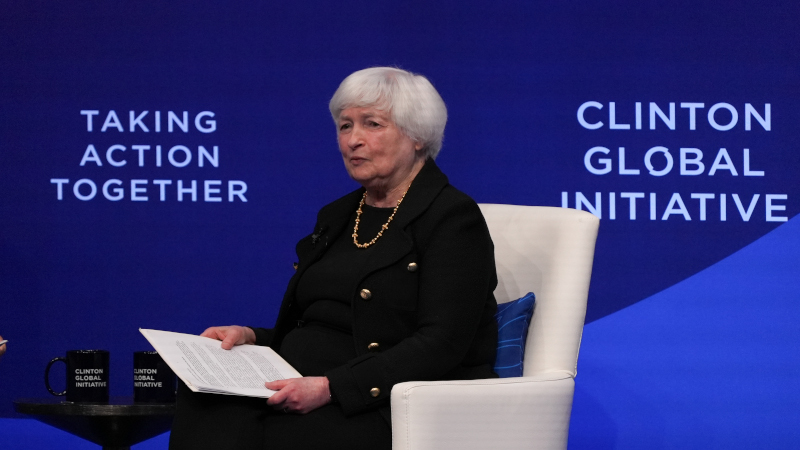
The U.S. Treasury Department made a sobering announcement on Monday, revealing that the nation’s debt has soared to a staggering $33 trillion. This financial milestone arrives amid the backdrop of intense political negotiations over government spending in the nation’s capital, shedding light on the intricate web of fiscal, political, and economic challenges facing the United States.
The national debt is a multifaceted construct, comprising a combination of intergovernmental holdings and debt owed to the public through instruments like savings bonds. Over the years, it has seen steady growth as the government has increasingly turned to borrowing to finance its operations. This trend gained momentum in the early 21st century, fueled by a series of new wars, expansive governmental programs, and economic crises, all of which prompted significant federal intervention aimed at stabilizing and rejuvenating the economy.
The national debt has become a pivotal battleground in American politics, featuring intense ideological clashes. Republicans, who often oppose further federal spending on various programs, have repeatedly refused to lift the debt ceiling – a cap on congressional spending. Their agreement to do so hinges on Democrats committing to substantial budget cuts. A recent showdown in the spring of 2023 pushed the federal government perilously close to defaulting on its debt before a compromise was reached, allowing the government to allocate more funds toward servicing its debts.
This near-default scenario led to a downgrade of the U.S. government’s credit rating, raising fresh concerns about potential economic downturns in the future, as lenders grew apprehensive about investing in what they perceived as a riskier government.
Yet another budgetary clash is currently unfolding in Washington this week, stemming from the repercussions of the debt ceiling deal reached in June. Lawmakers are grappling to reach consensus on a set of spending bills vital for the federal government’s operations beyond September 30, the close of the fiscal year. Failure to strike an agreement could result in major portions of the federal government grinding to a halt until new spending arrangements are secured.
In remarks to the U.S. media on Monday, U.S. Treasury Secretary Janet Yellen expressed her confidence in the current state of the federal budget. She acknowledged that greater deficit reduction was achievable and highlighted the president’s proposals aimed at reducing deficits while stimulating economic growth. Yellen emphasized the need to keep deficits in check, with a focus on monitoring net interest as a share of GDP. Despite recent increases in interest rates, this metric remains at a reasonable level, hovering around 1%. However, she cautioned that careful fiscal management would be essential to sustain this course successfully.
The $33 trillion national debt figure serves as a stark reminder of the intricate interplay between politics, spending decisions, and economic stability. It underscores the urgent need for bipartisan cooperation and responsible fiscal governance to address these pressing challenges and secure the nation’s financial future.
RELATED ARTICLES
- Poland Demands NATO members Raise their Investment to 3% of GDP
- Canada's Economy is Collapsing and Nobody is Noticing
- War between the US and China over Taiwan could cost the global economy a staggering $10 TRILLION
- China now owns nearly 200,000 acres of land in America
- Biden signs Executive Order to create a U.S. Central Bank Digital Currency











